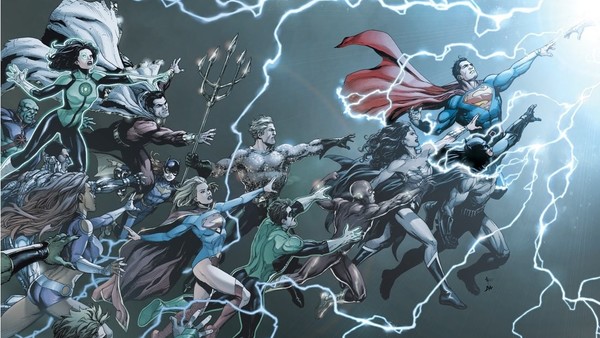How The New 52 Broke DC Comics
The Many Legacies Of The New 52

By 2015, the New 52 experiment had all but come to an end. Marvel had regained its dominant place in the direct market, and this forced DC editorial to ask some difficult questions. About a year later, DC began a new reboot called DC Rebirth in a bid to recapture what had been lost with the New 52. As Dan DiDio recounted to Abraham Reisman for New York Magazine a few months after Rebirth's launch:
"There was a disconnect with the fan base, more than we’d even perceived. It felt palpable. Nobody was really into the stories. We might’ve gone a little bit too far with some of the New 52 stories and lost the connective tissue that people really used to identify with our characters."
Rebirth was, in essence, a course correction for the publisher. Things didn't go back to how they were before, but there was an acknowledgement that whatever the New 52 was, it wasn't what drew readers to DC in the first place. Rebirth released to critical acclaim in 2016, featuring a dynamic lineup of creative teams and comics, and though it hasn't been all smooth sailing since, the publisher has since enjoyed one of its most imaginative periods in years, leading into the exciting Future State event at the beginning of 2020, as well as the ongoing Infinite Frontier.

And this isn't to say that the New 52 was a complete bust. In unpacking the legacies of the five-year-long initiative, fans can point towards clear successes like Scott Snyder and Greg Capullo's Batman, or Jimmy Palmiotti and Amanda Conner's Harley Quinn. The problem is that there didn't have to be a massive reboot for these series to exist, although no one can contest its achievement in bringing in new readers to the publisher.
By far the two most fascinating aspects surrounding the fallout of the New 52, though, has been seeing its principle architect, Geoff Johns, reckon with its legacy, as well as the fact it is now weirdly the predominant incarnation of DC in wider media.
Johns used the ill-considered Watchmen follow-up Doomsday Clock to unpack the changes he introduced via the New 52 back in 2016. The story reveals how Doctor Manhattan had altered the timeline to create the New 52 all along, but after being confronted with the negative effects of the changes, began to restore the old one. Icky use of Watchmen aside, it was also during this time that Johns stepped down from his roles as chief creative officer and president of DC Entertainment, which saw him heavily involved in the construction of Warner Bros. DC Extended Universe franchise alongside filmmaker Zack Snyder.
[Article continues on next page...]